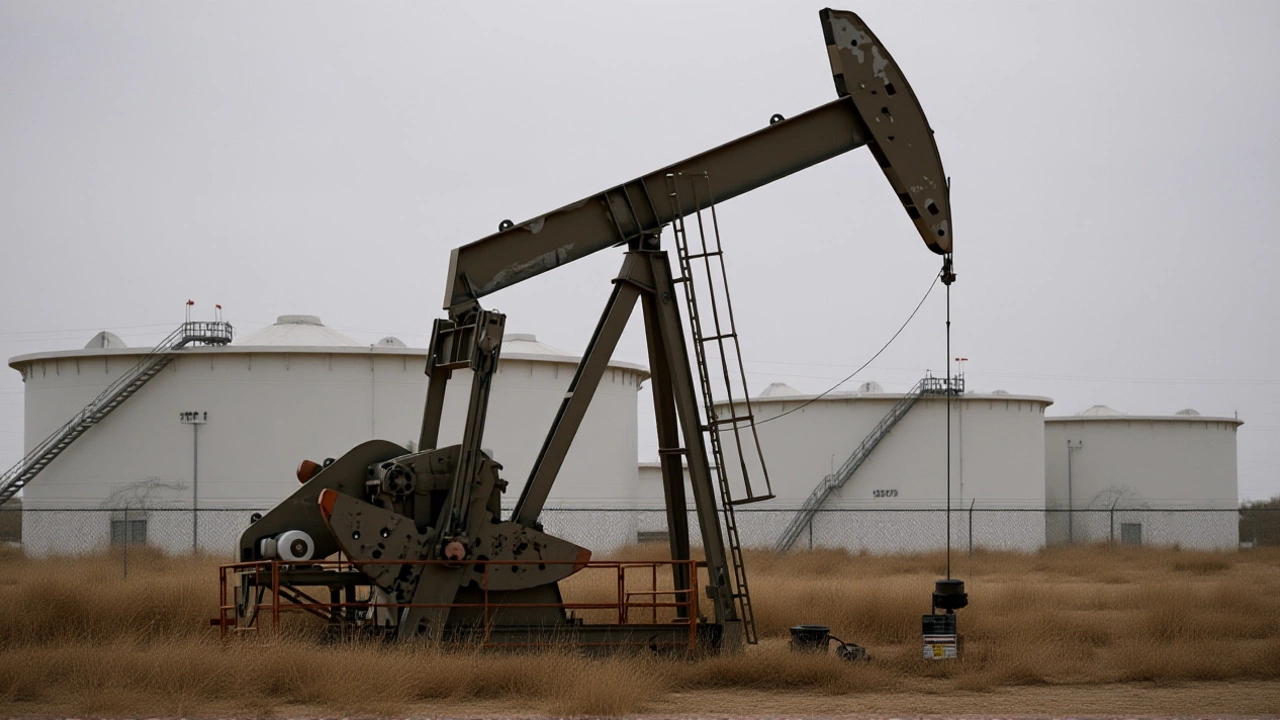Global oil prices tumbled nearly 3% on Wednesday, November 19, 2025, as traders reacted to the American Petroleum Institute’s startling report of a 4.4 million barrel surge in U.S. crude inventories — the third straight weekly build. The New York Mercantile Exchange’s December WTI contract closed at $59.10 per barrel, down $1.64, while Intercontinental Exchange’s January Brent futures slipped to $63.81. The sell-off wasn’t just about one report. It was the culmination of months of mounting supply, weakening demand signals, and a growing realization that the market is awash in oil — and no one’s sure when it’ll drain.
Why This Inventory Build Matters More Than Ever
The American Petroleum Institute’s data, released at 4:30 PM Eastern Time, showed not just crude stocks rising, but gasoline and distillate inventories climbing too. That’s unusual. Typically, when demand is strong, those refined products get drawn down. Here, they’re piling up — a sign consumers aren’t buying as much, even as refineries keep churning out fuel. It’s like a highway jammed with cars that never leave the parking lot. This isn’t a fluke. The prior two weeks — ending November 7 and October 31 — also showed unexpected inventory gains. Together, they’ve erased months of OPEC+ efforts to tighten supply. And the Organization of the Petroleum Exporting Countries admitted it: they’ve revised their Q3 2025 forecast from a deficit to a 500,000 barrels-per-day surplus. That’s not a rounding error. That’s a market in freefall.OPEC+ Pauses — But Is It Enough?
In response, the OPEC+ coalition — which includes Russia, Mexico, and other non-OPEC producers — announced it would freeze production increases through the first quarter of 2026. Sounds reasonable, right? Except markets saw through it. The pause isn’t a cut. It’s a holding pattern. And with global supply still outpacing demand by over 900,000 barrels per day in 2026, according to the U.S. Energy Information Administration, it’s not enough. The EIA, based in Washington, D.C., now forecasts crude prices will average just $55 per barrel in 2026 — down from $77 last year. Non-OPEC supply, mostly from U.S. shale, Canadian oil sands, and Brazilian offshore fields, is projected to grow by 1.8 million bpd next year. Demand? Only 1.2 million bpd. That gap isn’t narrowing. It’s widening.
Energy Stocks Take a Beating
The market didn’t just react to oil prices — it panicked about profits. On the New York Stock Exchange, ExxonMobil Corporation shed 5.1%, while Chevron Corporation dropped 4.8%. Occidental Petroleum Corporation (OXY) fell 5.7%, and Canada’s Canadian Natural Resources Limited (CNQ) slid 4.2% on the Toronto Stock Exchange. Why? Because shale producers in the Permian Basin need $60-plus per barrel to break even. At $59, they’re barely treading water. At $55? Many will cut capital spending, delay new wells, and lay off workers. Rystad Energy, the Norwegian research firm, says nearly 15% of U.S. shale projects are now unprofitable at current prices — up from 5% just six months ago.What’s Next? The December 4th Deadline
The real drama is coming on December 4, 2025, when OPEC+ ministers meet in Vienna. Analysts at JPMorgan Chase & Co. and Goldman Sachs Group Inc. are already warning: if inventories keep climbing, OPEC+ will have to announce deeper cuts — possibly 1 million bpd or more. That’s a political minefield. Russia, already under Western sanctions, doesn’t want to sacrifice more output. Saudi Arabia is watching its budget closely. And the U.S. doesn’t want to see prices collapse — it’s still the world’s top producer. Meanwhile, trading volumes on NYMEX crude futures hit 1.28 million contracts on November 19 — 32% above the 30-day average. That’s not just speculation. That’s fear.
The Bigger Picture: A Market Out of Balance
This isn’t a temporary glitch. It’s structural. The world is producing more oil than it needs — and has been since mid-2024. Electric vehicles are growing, but slowly. Global economic growth is sluggish. China’s demand is flat. And U.S. production? It’s at record highs. The EIA projects global liquid fuels supply will hit 105.1 million bpd in 2026, while demand peaks at 104.2 million. That 900,000 bpd surplus isn’t going away without either a major recession, a war, or a massive OPEC+ response. The twist? The very thing that helped oil prices rise last year — U.S. sanctions on Russian diesel and Ukrainian strikes on refineries — has now lost its punch. Markets are learning to look past geopolitics when the fundamentals are this bad.Frequently Asked Questions
How does this affect U.S. shale producers in the Permian Basin?
U.S. shale operators in the Permian Basin need crude prices above $60 per barrel to maintain profitability, according to Rystad Energy. At $59.10 for WTI, many are already operating at a loss. If prices fall to $55 as the EIA forecasts, up to 15% of active shale projects could become unviable, forcing companies to slash drilling, delay completions, and potentially lay off thousands of workers by early 2026.
Why did OPEC+ only pause production hikes instead of cutting output?
OPEC+ avoided deep cuts to avoid ceding market share to non-OPEC producers like the U.S. and Canada, which are ramping up output. A pause in hikes is a political compromise — it signals concern without triggering a price collapse that would hurt all members. But with inventories still rising, analysts warn this may only delay deeper cuts until the December 4 meeting in Vienna.
What role did U.S. inventory reports play in the price drop?
The American Petroleum Institute’s weekly report is a key market signal, especially since it’s released 24 hours before the official EIA data. A 4.4 million barrel build — triple the market’s expectation — confirmed that U.S. supply is growing faster than demand. Combined with rising refined product stocks, it shattered any remaining optimism about near-term demand recovery, triggering a wave of selling across global oil markets.
Is this similar to past oil crashes, like in 2020 or 2014?
Yes and no. Like 2014, this is driven by oversupply and weak demand — but without a major demand shock like the pandemic in 2020. The key difference? Today’s market has far more U.S. shale capacity, which reacts faster to price signals. That means this downturn could be sharper but shorter if producers cut back quickly. But if OPEC+ hesitates, it could drag on into 2027.
How will this impact gas prices at the pump?
Gas prices may dip slightly in the coming months, but not as sharply as crude. Refineries are still running near capacity, and seasonal demand for heating oil is rising. Analysts expect national average gasoline prices to fall by 10-15 cents per gallon by January 2026 — not enough to ease inflation pressure, but a small relief for drivers.
What’s the outlook for energy stocks in 2026?
Energy stocks are likely to remain volatile. Producers with low debt and strong balance sheets — like Chevron and ExxonMobil — may survive with dividends intact. But smaller shale firms and Canadian juniors could face distress. Investors are already shifting toward LNG exporters and integrated majors with renewable investments, seeing them as safer bets in a low-price environment.

